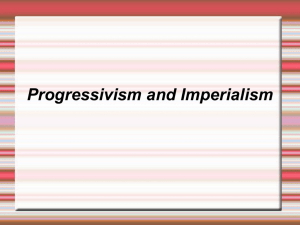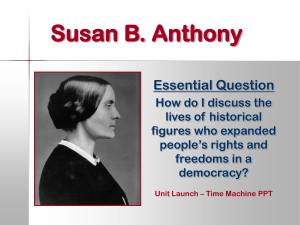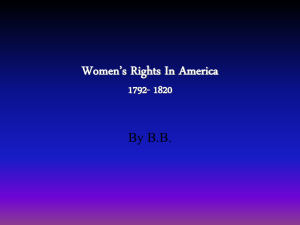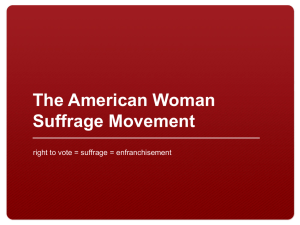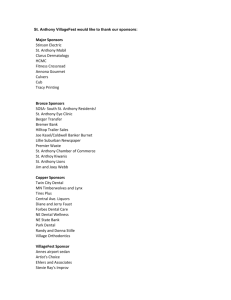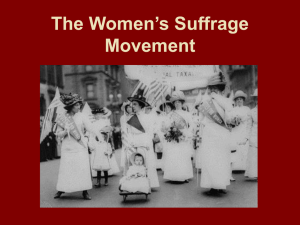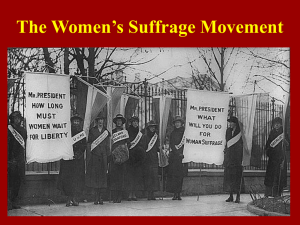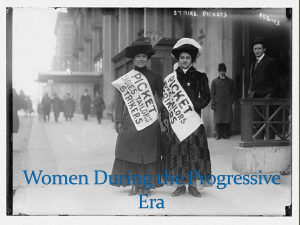Susan B Anthony
advertisement
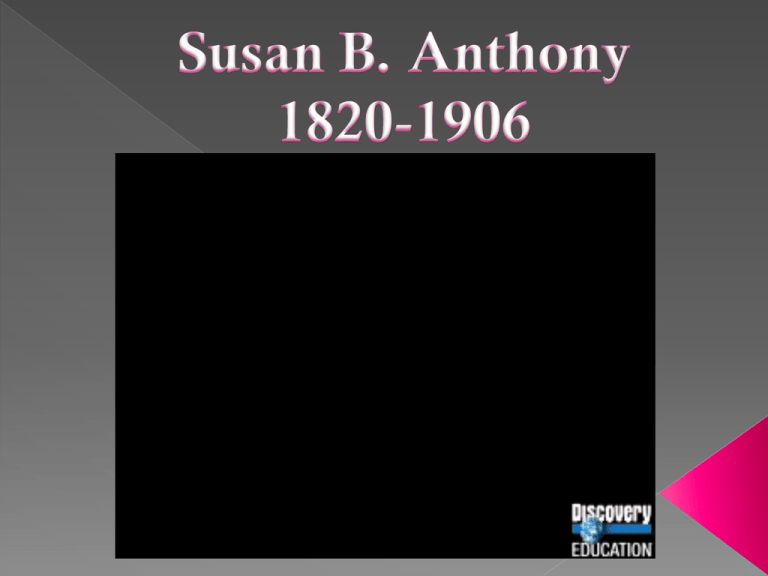
Why is Susan B. Anthony Important? › The Early Years › The Middle Years › The Later Years Timeline Chart Women Suffrage Before the 19th Amendment Graphs Clothing Food Music The most important thing to remember about Susan B Anthony is that she worked her whole life toward the rights of women to vote. She believed in justice, people’s rights and freedoms. Susan B. Anthony was born February 15, 1820 in Adams, Massachusetts. She was brought up in a Quaker family that believed in justice and equal rights. Early in her life she developed a sense of wanting people to be treated fairly. She saw that women were NOT treated fairly and equally as men. - The picture shows a Quaker meeting. Men sat on one side and women on the other side. Quakers believed that men and women had different “roles”, but women were allowed to talk at their meetings and give their opinions. This was NOT true of other religious meetings. In most places women were NOT allowed to participate and talk about their ideas. Susan B. Anthony and her family moved to Rochester, New York in 1845. During her lifetime, becoming a teacher or a nurse were the only two professions a women could do. She chose to be a teacher. This was Susan B. Anthony’s house in Rochester, New York! In the 1850’s she became active in the anti-slavery movement. She also worked toward woman’s rights. In her lifetime, married women could not own their own property. Their house, furniture, even their clothes were owned by their husband. Anti-slavery Quakers met at Susan B. Anthony’s family farm almost every Sunday, where they were sometimes joined by Frederick Douglass. In 1868 Anthony began publication of her newspaper called The Revolution. In the paper she spoke out for full equality of the freed slaves, for women’s rights, and for the fair treatment of blacks and women. She began her New York State campaign for woman suffrage (this is a fancy word meaning women’s right to vote) in Mayville, New York, speaking and traveling alone. She believed that men and women had equal minds, and that women should be paid the same as a man. Men believed that women were NOT equal to them. This pictures shows Susan B. Anthony arguing in public for women’s right to vote. In 1872, Susan B. Anthony, three of her sisters, and other women were arrested in Rochester, New York for voting. Susan B Anthony was brought up in a household that allowed women to take part in discussions and speak their own minds. Most women were taught that they were not as good as men and that they should be quiet and not speak their minds. She overcame these obstacles and believed that “failure is impossible.” She never gave up for what she believed was right. Susan B Antony died in 1906. At the time of her death, women still did not have the right to vote. In 1920 the 19th Amendment to the U.S. Constitution, also known as the Susan B. Anthony amendment, granted the right to vote to all U.S. women over the age of 21. The most important thing to remember about Susan B Anthony is that she worked her whole life toward the rights of women to vote. She believed in justice, people’s rights, and freedoms for women and for blacks. Dates Events 1820 Born in Adams, Massachusetts 1845 She and family moved to Rochester, NY. Their farm becomes a meeting-place for anti-slavery activists, including Frederick Douglass. 1852 Attends first women’s rights convention. 1856 Anthony becomes agent for the American Anti-Slavery Society. 1872 Anthony is arrested for voting and is indicted in Albany. She continues to lecture and attend conventions. 1905 Anthony meets with President Theodore Roosevelt in Washington D.C. about submitting a suffrage amendment to Congress. 1906 Anthony attends suffrage hearings in Washington, D.C. She gives her "Failure is Impossible" speech at her 86th birthday celebration. Anthony dies at her Madison Street home on March 13. No voting by women 15 19 Women voting in primaries Women voting in presidential election 11 2 Complete voting rights for women Plain dresses made of dark fabric like browns and grays. Not black, because it would fade. Wearing white caps, white kerchiefs, white apron, bonnet and a shawl or cloak. Other Cornmeal Vegetables grown in garden Fruits Meats Deer Pork/Bacon Buffalo Watermelon Apples Pears Home, Sweet Home by Henry Rowley Bishop Long, Long Ago by Thomas Haynes Bayley Riding on a Rail by Charles Crozat Converse Rock me to Sleep by Sir Julius Benedict The Pig Song by Francis Crowley Burnand Always Look on the Sunny Side by Bernard Covert
